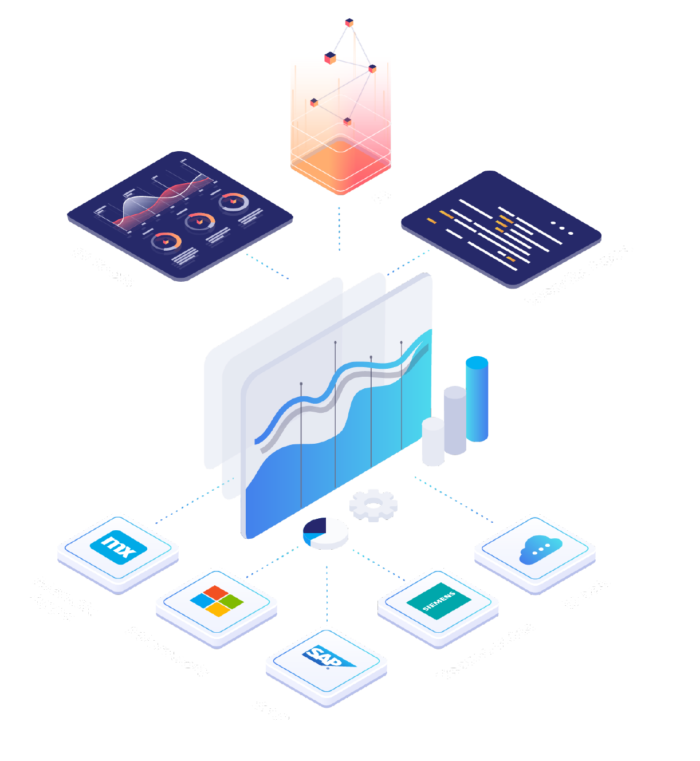How To Build Scalable And Maintainable Mendix Apps

Introduction
Mendix is a powerful low-code platform that enables developers to build scalable and maintainable applications quickly. However, building scalable and maintainable applications can be challenging, especially for organizations that are new to Mendix. In this article, we will discuss some best practices for building scalable and maintainable Mendix apps, including designing for scalability, leveraging reusable components, and implementing automated testing.
Designing for Scalability
Designing for scalability is critical when building Mendix applications. Scalability refers to the ability of an application to handle an increasing number of users and data without sacrificing performance. Building scalable applications requires careful planning and design.
One best practice for designing scalable Mendix applications is to use microservices architecture. Microservices architecture involves breaking down an application into small, modular services that can be developed and deployed independently. This approach enables organizations to scale specific components of an application as needed, rather than scaling the entire application.
Another best practice for designing scalable Mendix applications is to use the right data storage options. Mendix services offers several data storage options, including cloud-based databases and on-premises databases. Choosing the right data storage option depends on the application’s requirements and expected usage. For example, cloud-based databases may be more scalable and cost-effective for applications that require frequent scaling.
Leveraging Reusable Components
Another best practice for building scalable and maintainable Mendix applications is to leverage reusable components. Reusable components are pre-built elements that can be easily integrated into an application, saving developers time and effort.
Visit here for: Mendix Developers
Mendix provides several built-in reusable components, such as user management, workflow, and reporting. Additionally, Mendix’s app store offers a range of pre-built components and integrations, such as payment gateways, mapping services, and email services.
Using reusable components not only speeds up development but also improves the maintainability of an application. Reusable components are typically well-tested and well-documented, reducing the risk of errors and improving the stability of an application.
Implementing Automated Testing
Automated testing is a critical component of building scalable and maintainable Mendix applications. Automated testing involves using software tools to run tests automatically, rather than manually.
Mendix offers several built-in testing tools, including unit testing and end-to-end testing. Unit testing involves testing individual components of an application, while end-to-end testing involves testing the entire application’s functionality.
Implementing automated testing enables organizations to catch bugs and errors early in the development process, reducing the risk of issues in production. Additionally, automated testing enables organizations to test applications at scale, ensuring that applications can handle a high volume of users and data.

Optimizing Performance
Optimizing performance is essential when building scalable Mendix applications. Performance refers to the speed and responsiveness of an application. Applications that are slow or unresponsive can lead to user frustration and lost revenue.
One best practice for optimizing performance in Mendix applications is to use caching. Caching involves storing frequently accessed data in memory, reducing the need to retrieve data from the database. This can significantly improve the performance of an application.
Another best practice for optimizing performance is to use asynchronous processing. Asynchronous processing involves executing tasks in the background, rather than blocking the user interface. This approach enables the user interface to remain responsive while the application performs background tasks, improving the user experience.
Managing Technical Debt
Technical debt refers to the cost of maintaining and updating an application over time. Technical debt can accumulate when developers take shortcuts or make compromises in the development process. Managing technical debt is critical when building scalable and maintainable Mendix applications.
One best practice for managing technical debt is to use a structured development process. A structured development process involves following a set of best practices and standards when building an application. This approach ensures that developers are consistent in their approach, reducing the risk of technical debt.
Another best practice for managing technical debt is to regularly review and refactor code. Refactoring involves improving the design and structure of code to make it easier to maintain and modify in the future. Regular code reviews and refactoring can help organizations identify and address technical debt before it becomes a significant issue.
Finally, using version control is another best practice for managing technical debt. Version control involves keeping track of changes to an application’s code over time. This approach enables organizations to roll back to previous versions of an application if necessary and helps developers collaborate on code changes more effectively.
Conclusion
Building scalable and maintainable Mendix applications requires careful planning, design, and development. Designing for scalability, leveraging reusable components, implementing automated testing, optimizing performance, and managing technical debt are all critical best practices for building Mendix applications that can meet the needs of organizations over time.
By following these best practices, organizations can build Mendix applications that can scale to meet the needs of users and data, while also being easy to maintain and modify over time. The result is a robust, reliable, and future-proof application that can help organizations stay competitive in today’s rapidly evolving digital landscape.


